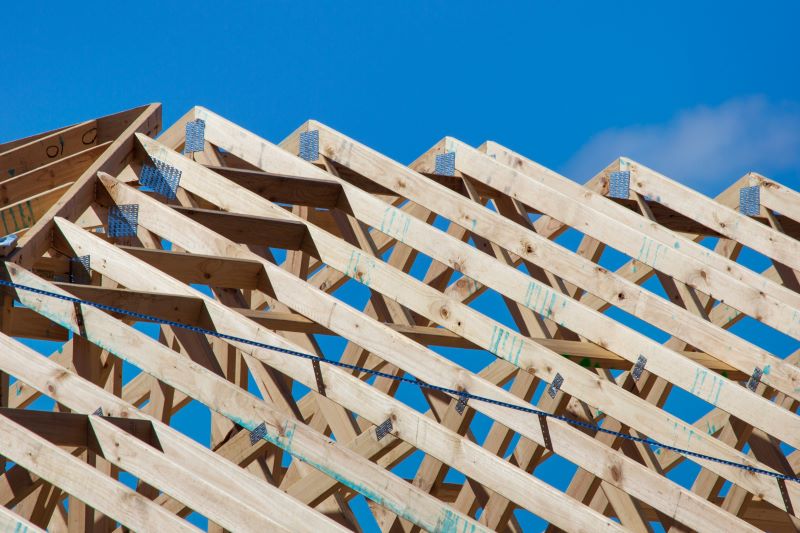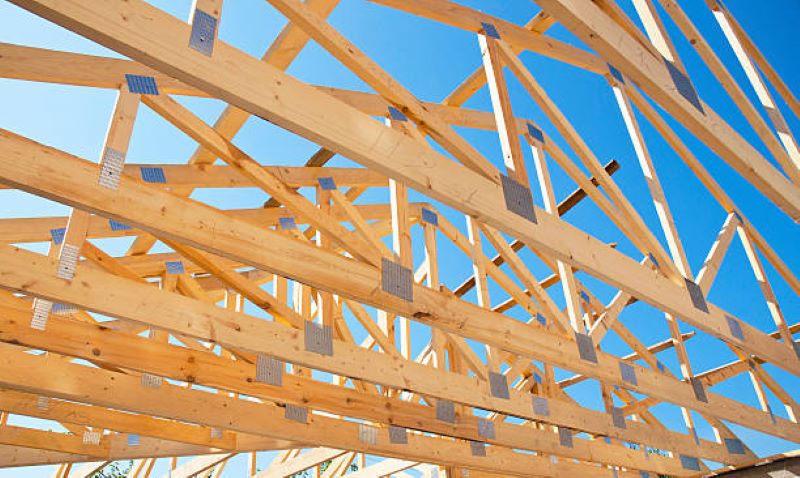When you look at a building’s roof, the strength and shape are not just about the roof sheets — it’s what lies beneath that truly matters. That hidden structure is known as a roof truss. But what exactly is a roof truss, and why is it such an essential part of construction in South Africa?
In this article, we’ll explain what a roof truss is, how it works, the different types, and why roof trusses have become the go-to choice for residential and commercial roofing projects.
What is a Roof Truss?
A roof truss is a structural framework made up of straight pieces of timber or steel, joined together to form a rigid triangular shape. This design distributes the weight of the roof evenly, allowing it to span large distances without the need for internal load-bearing walls.
In simple terms, a roof truss acts as the skeleton of your roof, supporting the roof covering (tiles, sheeting, or shingles) and keeping the structure strong, straight, and safe.
Why Triangles?
The triangle is one of the strongest geometric shapes in engineering. The triangular configuration of a truss ensures that loads are spread evenly across all points, making the structure highly stable and resistant to bending or sagging — even under heavy wind or rain loads.
Types of Roof Trusses
There are many types of roof trusses, each designed for specific applications and architectural needs. Some of the most common types used in South Africa include:
-
King Post Truss
The simplest type, ideal for small spans like garages and garden sheds. It features a single vertical post in the centre. -
Queen Post Truss
Similar to the king post but uses two vertical posts, allowing for a wider span. -
Howe Truss
Common in residential roofing, the Howe truss uses diagonal and vertical members to handle both compression and tension efficiently. -
Fink Truss
A popular choice for houses and light industrial buildings, recognized by its distinctive “W” web design. -
Scissor Truss
Used when you want a vaulted or cathedral ceiling — it allows for more interior headroom. -
Attic Truss
Combines roof support with usable attic space, great for storage or living areas under the roof.
Timber vs Steel Roof Trusses
While timber trusses are most commonly used in South Africa due to their affordability and ease of fabrication, steel trusses are gaining popularity for their durability, fire resistance, and suitability for larger commercial buildings.
| Feature | Timber Truss | Steel Truss |
| Cost | More affordable | More expensive |
| Weight | Light | Heavier |
| Durability | Good, if treated | Excellent |
| Maintenance | Needs treatment | Minimal |
| Span | Up to 20m | Over 30m possible |
Benefits of Using Roof Trusses
-
Cost-effective: Pre-fabricated trusses reduce on-site labour and waste.
-
Fast installation: Trusses are delivered ready to install, saving time.
-
Strong and reliable: Engineered to meet SANS building standards.
-
Flexible design options: Suitable for any roof shape or pitch.
-
Eco-friendly: Uses optimized timber lengths and less waste material.
How Roof Trusses Are Made
-
Design – Structural engineers use software to calculate load requirements and design each truss for optimal strength.
-
Fabrication – Trusses are assembled in a factory using precision cutting tools and pressed nail plates.
-
Delivery & Installation – Completed trusses are transported to the site and installed by professional roof contractors.
At Roof Trusses South Africa, we work directly with local truss plants across the country to ensure you get high-quality, SANS-approved trusses — designed, manufactured, and delivered to site.
How Long Do Roof Trusses Last?
A well-designed and properly maintained roof truss can last 50 years or more. Regular inspections for moisture damage, pest activity, and loose joints will help maintain structural integrity for decades.
Frequently Asked Questions
1. Are roof trusses cheaper than rafters?
Yes. Trusses are pre-engineered and mass-produced, which makes them more cost-effective than traditional rafter roofs.
2. Can I modify or cut a truss?
No. Altering a truss can weaken its structure. Always consult a structural engineer before making changes.
3. Do roof trusses need maintenance?
Timber trusses require periodic inspection for termites and moisture. Steel trusses need minimal maintenance.


